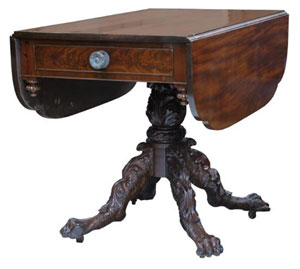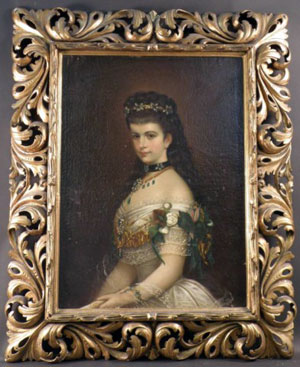
Ancient civilizations took the creature feature to a higher level bringing examples of them into the home in three-dimensional forms incorporated into furniture. Abundant examples of Egyptian furniture have been discovered that reveal chair legs ending in the paws of a lion. One example that is at least 3,000 years old is in the British Museum. The basic form of the Egyptian bed remained unchanged for 2,000 years. Most of them had legs in the form of animal extremities ranging from heavy bull’s legs with hooves to elegant and graceful gazelle legs to feline legs with paw and claw. This last example perhaps was in keeping with the use of panther hides as bed coverings.


